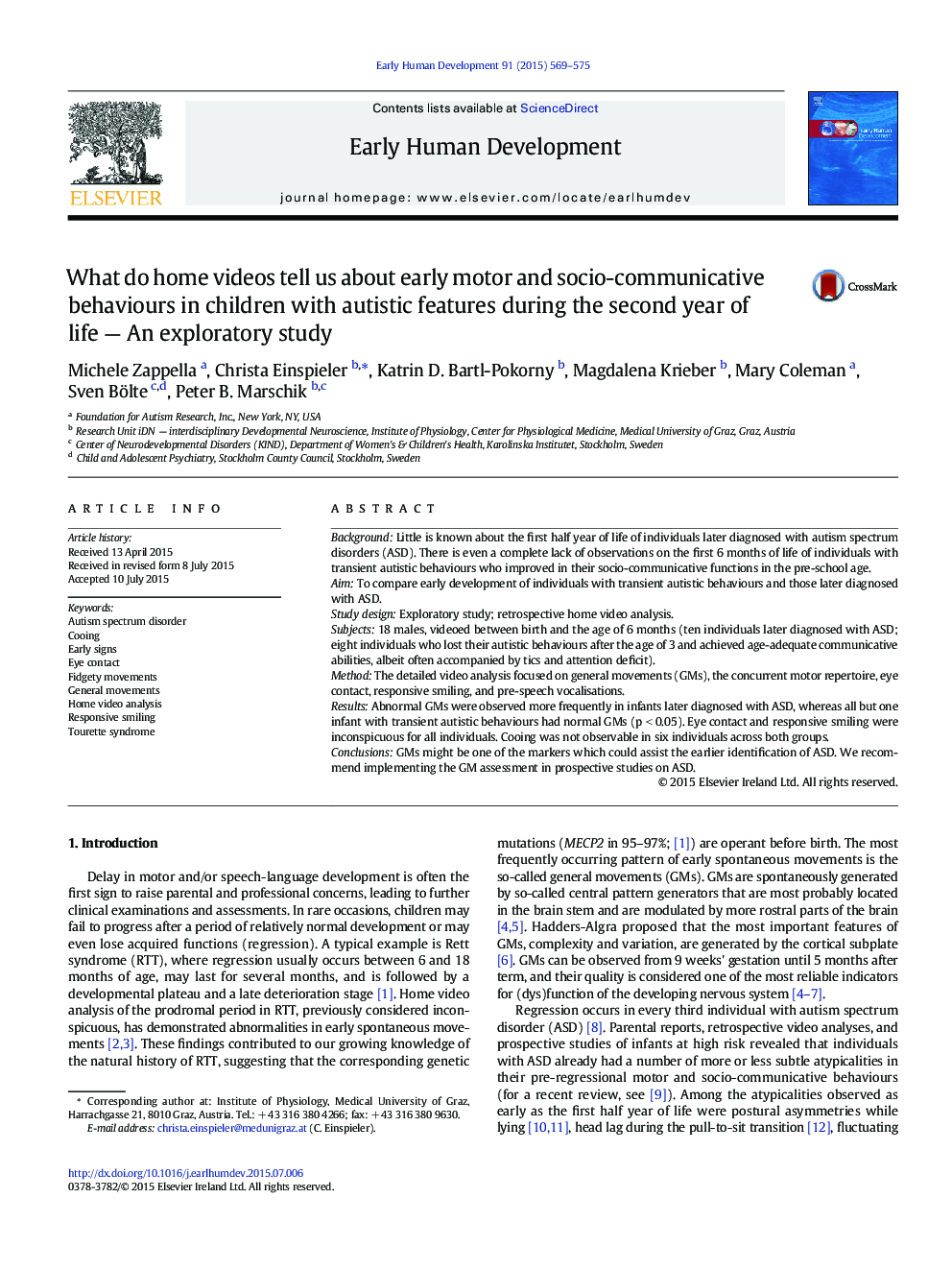| Article ID | Journal | Published Year | Pages | File Type |
|---|---|---|---|---|
| 3917733 | Early Human Development | 2015 | 7 Pages |
•7/8 individuals with autism had abnormal general movements in early infancy.•5/6 individuals with transient autistic behaviour had normal general movements.•Global observation indicated typical eye contact and smiling in infants with autism spectrum disorder.
BackgroundLittle is known about the first half year of life of individuals later diagnosed with autism spectrum disorders (ASD). There is even a complete lack of observations on the first 6 months of life of individuals with transient autistic behaviours who improved in their socio-communicative functions in the pre-school age.AimTo compare early development of individuals with transient autistic behaviours and those later diagnosed with ASD.Study designExploratory study; retrospective home video analysis.Subjects18 males, videoed between birth and the age of 6 months (ten individuals later diagnosed with ASD; eight individuals who lost their autistic behaviours after the age of 3 and achieved age-adequate communicative abilities, albeit often accompanied by tics and attention deficit).MethodThe detailed video analysis focused on general movements (GMs), the concurrent motor repertoire, eye contact, responsive smiling, and pre-speech vocalisations.ResultsAbnormal GMs were observed more frequently in infants later diagnosed with ASD, whereas all but one infant with transient autistic behaviours had normal GMs (p < 0.05). Eye contact and responsive smiling were inconspicuous for all individuals. Cooing was not observable in six individuals across both groups.ConclusionsGMs might be one of the markers which could assist the earlier identification of ASD. We recommend implementing the GM assessment in prospective studies on ASD.
